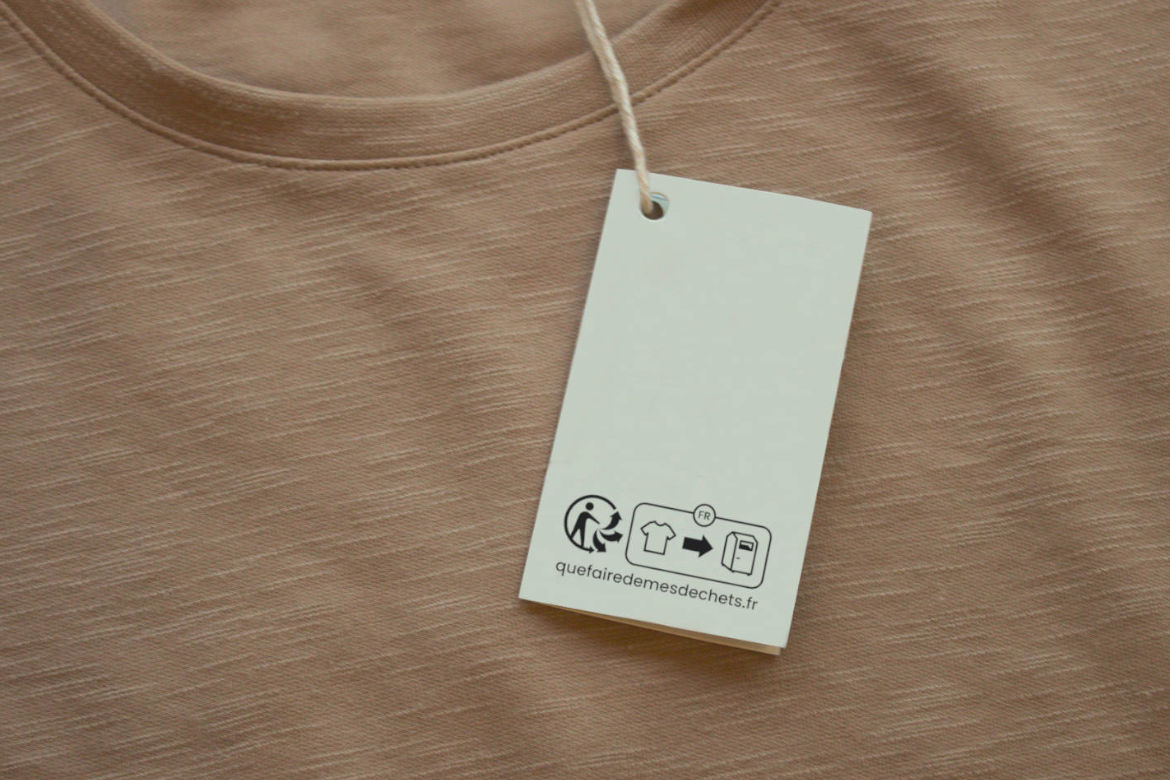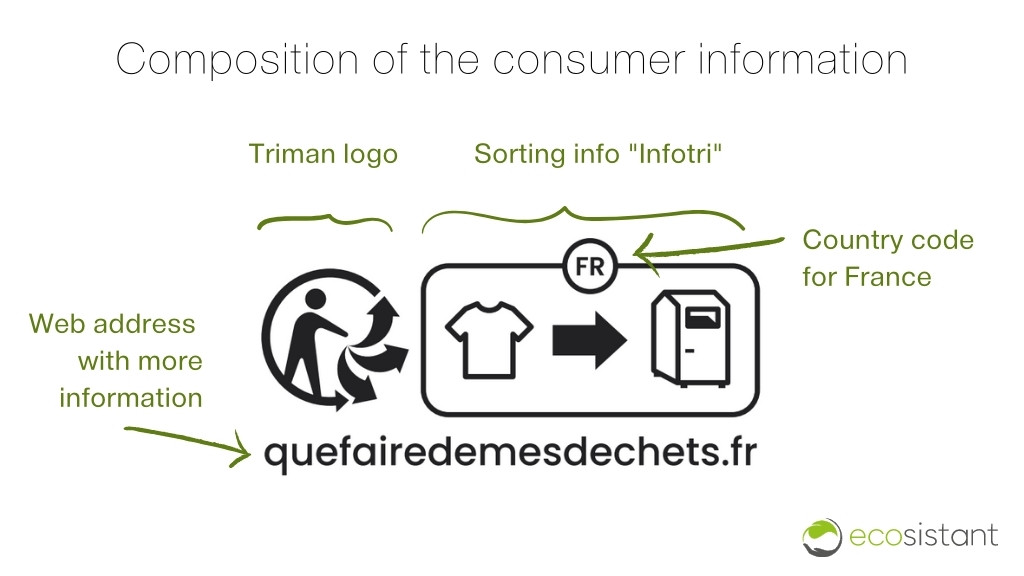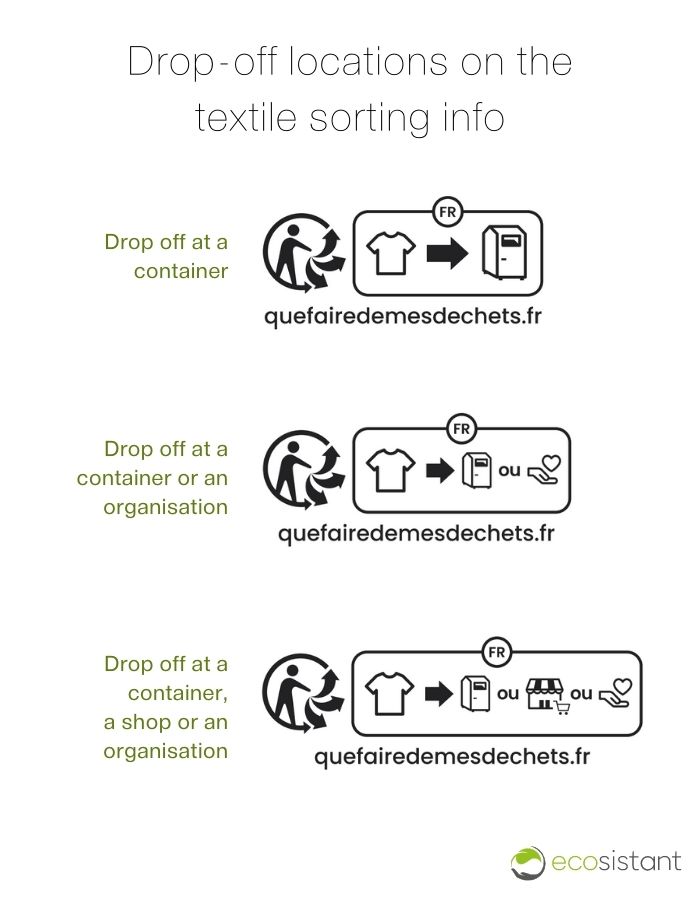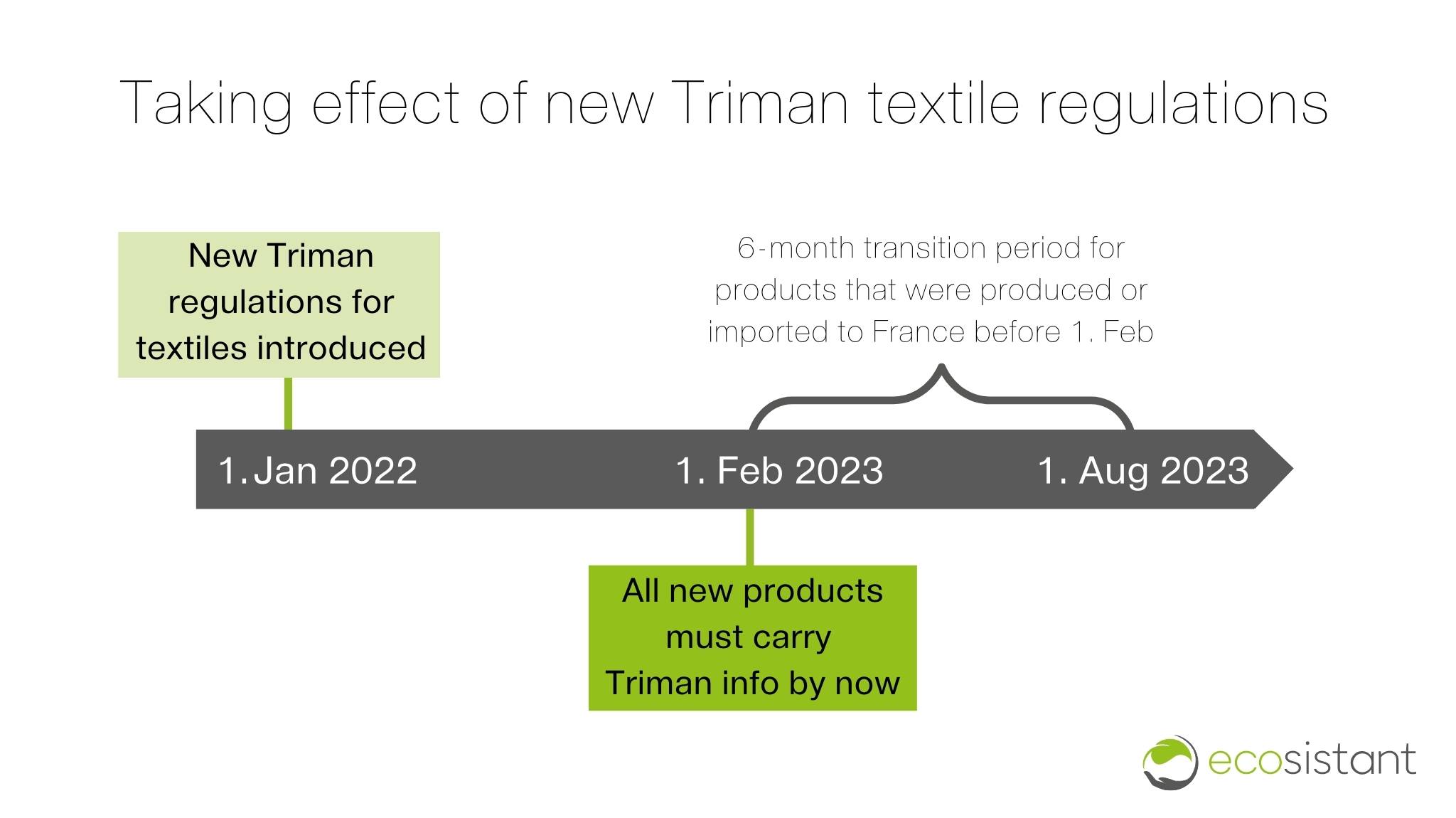The new Triman textile logo [What online shops selling in France need to know 2022]
Written by
Editorial TeamPublished on

From 2022 onwards, new requirements apply in France for the labelling of clothing, textiles and footwear: From now on, specific recycling instructions have to be printed onto each textile product sold in France.
For online shops, this means that you now need to start adding the new Triman logo with the sorting information to all your products. But there are several variations of the logo and you need to first determine which variation you should use on your textile products.
In this article we explain what the new Triman logo for textiles looks like in general, what the different versions and symbols mean and how you can use it on your products.
Why is there a new textile labelling obligation in France?
The Triman logo was originally introduced as a recycling symbol in France by Decree No. 2014-1577 in 2015. Back then, this logo only included the symbol of the man and the three arrows and was used on all types of products. But it turned out many French people did not understand its exact meaning.
Thus, it was decided that in order to increase recycling rates, it was necessary to give the end consumers clearer instructions on how they should recycle each product. As a result, the introduction of an improved, product-specific Triman logo was determined in the French Environmental Code (Code de l’environnement Art. L541-9-3).Since 1 January 2022, the Triman logo must now be combined with specific sorting information for the respective product type: (household) packaging, furniture, electronics, batteries, tyres, paper products as well as textiles including clothing, footwear and household linen.
What does the new Triman logo for clothing, textiles and footwear look like?
The following picture shows the basic structure of the logo with the new sorting info.

The new consumer information for textiles is similar to those for packaging, electrical and electronic goods, etc.: On the left-side you see the Triman logo and on the right-side a sorting information box with details about the recycling of the product.
The sorting info box (“Infotri” box) includes several pictograms to easily convey the recycling instruction: On the left side there is a pictogram of the product category, that is concerned. And on the right side, behind an arrow, there is a picture of the drop-off point where the product is to be handed in for recycling.
The small circle above the sorting info with the country code “FR” indicates that these regulations only apply in France.
Furthermore, a link to the French website quefairedesmedechets.fr (engl. “what to do with my waste”), where consumers can find further information on recycling, is given.
In principle, the Triman information can be affixed either with a white or with a transparent background.
What must the sorting info contain?
Depending on the product and the situation, different symbols must be used on the sorting info to signal the product category and the drop-off locations.
Three different product categories
Depending on whether the product belongs to one of the following categories, a different symbol must be used on the left side of the sorting info.
- Clothing: symbol of a T-shirt
- Textiles/household linen: symbol of a folded towel
- Footwear: symbol of a pair of derby shoes
Alternatively, all three symbols can always be used together.

Up to three drop-off locations can be specified
The drop-off locations that need to be indicated can also vary. In principle, only the use of the clothing container (container symbol) is obligatory.
Optionally, drop-off at organisations (symbol of a hand holding a heart) or drop-off at a voluntarily participating shop (symbol of a shop with a shopping trolley in front of it) can be added. The option of drop-off at a shop is however only intended for shops who have collection points in their sales outlets. It is therefore not available for online-only businesses.

What does the sorting info have to look like when selling exclusively in France?
If a textile product is sold exclusively in France, additional optional text content can be included on the Triman logo.
If the standard version of the sorting info with only the used clothing container is used, the sentence “Vos textiles et chaussures ont de l’avenir, donnez-les!” (Eng. “Your textiles and shoes have a future, donate them!”) will be added above.
If other drop-off locations are used in addition to the used clothing container (i.e. container and organisation or container, shop and organisation), then the sentence calling for donations is optional. Instead, a corresponding caption in French should be added to each drop-off location symbol in these cases. The word “conteneur” is added under the used clothing container, the word “magasin volontaire” under the shop and the word “association” under the organisation.
The following figure shows how the logo with all three drop-off locations and the additional text for exclusive sale in France (below) can look like compared to the logo without additional text (above).

Where exactly must the Triman textile logo be placed on the product?
The Triman logo with the sorting info must be affixed either directly to the product or to a tag which is attached to the product during purchase.
Specifically, it can be affixed in the following places:
- Printed or embroidered directly on the product
- On the textile label inside the garment, which also lists the composition of the fabric and care instructions
- On the cardboard label or “hangtag” that is removed after purchase
- On the packaging in which the product is sold (e.g., box, bag, polybag)
- On a sticker placed on the product or packaging
An exception can only be made for very small products where the previous options are not possible. For these, part of or all of the Triman information can be displayed electronically (e.g., on the company website):
| Size of product/packaging | Attachment |
| Surface area of the product or packaging is equal to or smaller than 10 cm2 in size | Use of an electronic Triman logo AND sorting info |
| Surface area of the product or packaging is between 10 cm2 and 20 cm2 | Use of an electronic Triman logo BUT sorting info on the product |
Note: Even if the Triman logo for textiles/clothing is applied to the packaging, the Triman logo for household packaging might also have to be applied next to it. This is because the two logos are to be considered independent of each other. Thus, two different Triman logos may have to be applied on the same packaging in this case.
As of when does the new Triman info have to be used on clothing, textiles and footwear?
The obligation to use the Triman logo in conjunction with specific sorting info for textiles applies from 1 January 2022. From this date until 1 February 2023 at the latest, all new products placed on the French market must be marked with this consumer information.

For products that were produced or imported in France before 1 February 2023, there is also a 6-month transition period until 1 August 2023. Until then, they may still be sold without the Triman information.
What happens if the Triman information is not affixed to products sold in France?
Anyone who violates the labelling obligation must expect fines.
For legal persons, this can be up to 15,000 euros according to the French Environmental Code Art. L541-9-4. For natural persons, the fine can also be up to 3,000 euros.
Online shops should therefore start using the Triman information on their clothing and textile products as soon as possible to avoid any problems when selling in France.
Make sure your online shop is compliant with all European recycling regulations
Recycling logo regulations do not only exist in France but in several European countries so far. But this is not all – Germany and other European countries are planning to introduce more in-depth recycling logos as well.
The same holds for general EPR (extended producer responsibility) and recycling laws. These even exist in all European countries.
Almost all online retailers who ship to European countries are affected by these recycling logo regulations (e.g., Triman in France) as well as general recycling laws (e.g., German Packaging Act).
The tricky part about selling in Europe is that these recycling regulations differ vastly from country to country and researching all the different regulations by yourself is practically impossible. For this reason, it is helpful to use a digital recycling compliance service to make sure you fulfil your obligations in all European countries and do not risk any fines or other penalties.
About the author
ecosistant supports online retailers in complying with all EPR and recycling regulations across Europe. Customers receive step-by-step instructions tailored to their specific online shops. Assistance with recycling logo regulations like the Triman logo is also offered.



